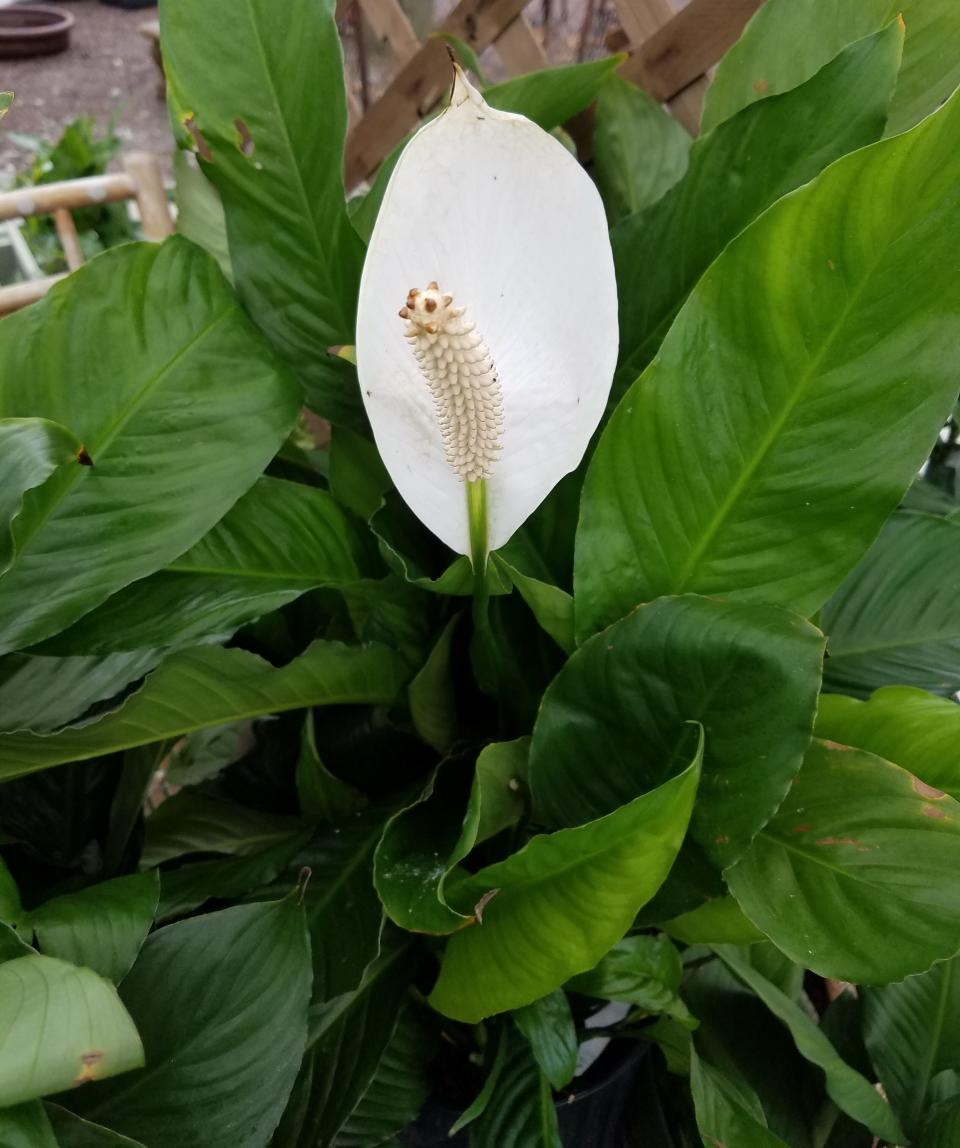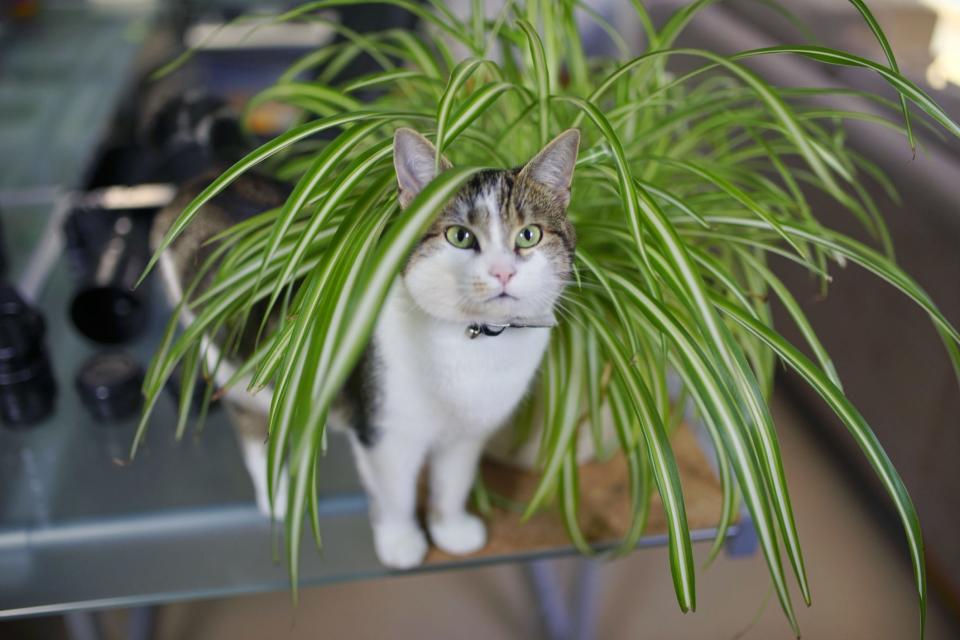These nice houseplants might just help you catch some Zs | Sally Scalera
Houseplants are a wonderful way to bring a little nature into your home. In addition to the aesthetics that plants can add to a room, they also provide other benefits.
Plants process the carbon dioxide that we exhale and release oxygen. They also help to maintain humidity levels, which can reduce respiratory problems that occur in the winter. Another type of plant, those that use CAM (Crassulacean acid metabolism) photosynthesis, releases oxygen through the night, which makes them perfect for the bedroom.

Check out the following plants that can be grown in your bedroom.
The ZZ plant, Zamioculcas zamiifolia, can be grown in bright shade to low light conditions and produces attractive glossy, deep green, waxy foliage. This plant is native to Kenya and northeastern South Africa and can handle dry conditions. I also know, from personal experience, that plants can sit in water for days and still do well. If you have pets or young children, ensure they can’t eat any part of this plant!
The aloe plant, Aloe vera (also called Aloe barbadensis) is a well-known plant used for treating burns and cuts. In addition to its healing properties, it will also filter out benzene. Aloe can easily be grown inside the house in bright areas near a window. Remember that this plant is mildly to moderately toxic to cats and dogs.
Bromeliads are another great houseplant for the bedroom. Look for the smaller types of bromeliads, like Neoregelia ‘Fireball’ (which will revert to green when not grown in full sun), to fit easily in the bedroom. Most bromeliads can handle shady locations, so they can grow just about anywhere in the house, including the bedroom. When watering, be sure to fill up the dish created by the foliage in the center of the plant.
More: Getting to the root of that palm tree rot | Sally Scalera
Mother-in-law’s tongue (which is totally unflattering to all those great mothers-in-law out there, like mine), Sansevieria trifasciata var. laurentii, will not only provide oxygen through the evening but will also filter out benzene, formaldehyde, trichloroethylene, xylene, and toluene. This cultivar has a yellow border around the leaf margin of the up-right, stiff foliage. It can handle lower light levels, will clean the air, and add a little color! This houseplant is toxic to dogs and cats, so consider this before purchasing.
Jade plants, Crassula ovata, are gorgeous succulent-looking “trees” with thick, rounded leaves. The plants will grow best in a bright area near a window but could handle a location with a little lower light. Jade plants are long-lived and should be easy to find as a small plant at a local garden center. This plant is also toxic to cats and dogs.
Cast iron plants, Aspidistra elatior, can grow in bedrooms because they can handle very low light levels. Just make sure that they aren’t in a location that receives any direct sunlight. Their dark green foliage grows upright also.
The ponytail palm, Beaucarnea recurvata, would do well in a bright window but could also handle a spot further away. This slow-growing plant is attractive as it grows new foliage above its swollen base. When planted outdoors, the ponytail palm will grow into a large “tree” if planted on Merritt Island or the barrier islands.
Many other houseplants have also been found to remove pollutants and improve indoor air quality. NASA researched this topic, and here are some popular houseplants that have been shown to be very useful in removing various indoor pollutants. The following house plants will clean the air in your home, but if you have pets, they are poisonous to cats and dogs.
The peace lily, Spathiphyllum spp., is a popular indoor plant because of its glossy, deep green foliage and attractive white blooms. It also filters benzene, formaldehyde, trichloroethylene, xylene, toluene, and ammonia. This plant can handle bright to medium light locations away from a window.

English ivy, Hedera helix, can grow in bright to lower light conditions. Research showed that this vining plant can remove benzene, formaldehyde, trichloroethylene, xylene, and toluene from the air. Growing as a vine, it can get quite large and either sprawl over a table or grow over a small trellis.
Another trailing plant is pothos, Epipremnum aureum, which resembles a variegated philodendron vine with heart-shaped leaves. This easy-to-grow house plant removes benzene, formaldehyde, xylene, and toluene. It handles even low-light conditions, making it very versatile.
The following houseplants will also improve indoor air quality, and they aren’t toxic to cats and dogs.
The spider plant, Chlorophytum comosum, filters out formaldehyde, xylene, and toluene. This plant is easy to grow and can handle all interior light conditions. The variegated spider plants are colorful and continually produce new plants on long stems that extend from the center of the plant.
If you want to grow a palm, the parlor palm, Chamaedorea elegans, is a good choice. This multitrunked palm cleans the air of benzene, formaldehyde, trichloroethylene, xylene, and toluene. It will grow best in bright light, but ensure it is out of direct sunlight and away from air vents. This palm is not bothered by spider mites like the Areca and other palms typically grown indoors.
More: Florida solitary bees keep flowers in bloom; here's how to attract them | Sally Scalera
When it comes to growing any plant in a container, make sure to choose a container that has good drainage and use a fast-draining potting mix. If the container doesn’t have a deep tray attached, be sure to purchase a tray to place below the pot. This will be useful when watering. Water all the potting mix from the top and let the water run through and collect in the tray below. It is best to let the potting mix dry out between each watering. The potting mix will become lighter in color, and the pot will be lightweight when dry. Overwatering is the most common cause of death for houseplants.
In their conclusion, the NASA researchers suggest that for the best indoor air quality benefits, there should be at least one plant for every 100 ft2 in the room. For CAM plants in the bedroom, more is probably better. If you don’t currently have any (or many) houseplants, now is a great time to add some. Check out your nearest garden centers for their selection because now is the perfect time to bring some of these plants into your home to improve the air quality and assist you as you sleep.
Sally Scalera is an urban horticulture agent and master gardener coordinator for the University of Florida’s Institute of Food and Agriculture Science.
This article originally appeared on Florida Today: Houesplants can bloom with beauty and health benefits | Sally Scalera

